
HobartHOH-bart; is the capital and most populous city of the island state of Tasmania, Australia. Located in Tasmania's south-east on the estuary of the River Derwent, it is the southernmost capital city in Australia. Despite containing nearly half of Tasmania's population, Hobart is the least-populated Australian state capital city, and second-smallest by population and area after Darwin if territories are taken into account. Its skyline is dominated by the 1,271-metre (4,170 ft) kunanyi / Mount Wellington, and its harbour forms the second-deepest natural port in the world, with much of the city's waterfront consisting of reclaimed land. The metropolitan area is often referred to as Greater Hobart, to differentiate it from the City of Hobart, one of the seven local government areas that cover the city. It has a mild maritime climate.

Tasmania is an island state of Australia. It is located 240 kilometres to the south of the Australian mainland, and is separated from it by the Bass Strait. The state encompasses the main island of Tasmania, the 26th-largest island in the world, and the surrounding 1000 islands. It is Australia's smallest and least populous state, with 573,479 residents as of June 2023. The state capital and largest city is Hobart, with around 40% of the population living in the Greater Hobart area. Tasmania is the most decentralised state in Australia, with the lowest proportion of its residents living within its capital city.
A ferry is a boat that transports passengers, and occasionally vehicles and cargo, across a body of water. A small passenger ferry with multiple stops, like those in Venice, Italy, is sometimes referred to as a water taxi or water bus.

Bass Strait is a strait separating the island state of Tasmania from the Australian mainland. The strait provides the most direct waterway between the Great Australian Bight and the Tasman Sea, and is also the only maritime route into the economically prominent Port Phillip Bay.

Devonport is a port city situated at the mouth of the Mersey River on the north-west coast of Tasmania, Australia. Positioned 47 kilometres (29 mi) east of Burnie and 98 kilometres (61 mi) north of Launceston, its harbour manages over half of Tasmania's imports and exports, standing as the busiest freight port on the island. Devonport also plays a central role in Tasmania's trade sector, supporting industries such as agriculture, manufacturing, and tourism. The City of Devonport's gross domestic product (GDP) was estimated at $3.5b in 2023.
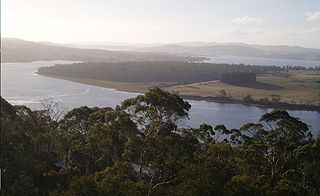
The Tamar River, officially kanamaluka / River Tamar, is a 70-kilometre (43-mile) estuary located in northern Tasmania, Australia. Despite being called a river, the waterway is a brackish and tidal estuary over its entire length.

The MS Theofilos was a passenger/vehicle ferry built at the Nobiskrug shipyard in Rendsburg, Germany in 1975.
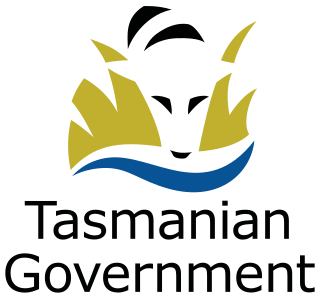
The Tasmanian Government or the Government of Tasmania is the executive branch of the Australian state of Tasmania. The leader of the party or coalition with the confidence of the House of Assembly, the lower house of the Parliament of Tasmania, is invited by the governor of Tasmania to form the executive. The governor appoints the premier of Tasmania.

The Clarke Island, also known by its Indigenous name of lungtalanana, part of the Furneaux Group, is an 82-square-kilometre (32 sq mi) island in Bass Strait, south of Cape Barren Island, about 24 kilometres (15 mi) off the northeast coast of Tasmania, Australia. Banks Strait separates the island from Cape Portland on the mainland. Clarke Island is the third-largest island in the Furneaux Group, and Tasmania's eighth largest island.

HSC INCAT 046 was a wave-piercing catamaran passenger-vehicle ferry. It operated under various marketing names, including Devil Cat, The Cat, The Lynx, and lastly The T&T Express.
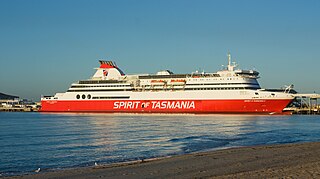
TT-Line Company Pty Ltd, trading as Spirit of Tasmania, is a Tasmanian Government-owned business that has been offering ferry services between mainland Australia and Tasmania since July 1993. Navigating the Bass Strait, Spirit of Tasmania ferry services cover a distance of 242 nautical miles between Geelong, Victoria and Devonport, Tasmania. Each journey across the "Sea Highway" takes approximately 9–11 hours in both directions.

Metro Tasmania, commonly called Metro, a Tasmanian Government business enterprise, is the largest bus operator in the state of Tasmania, Australia, with operations in three of the four largest urban centres of Hobart, Launceston, and Burnie. Urban services in Devonport are provided by a private operator, Kinetic. Services are provided by Metro under a range of urban and non-urban contracts with the Transport Commission, a division within the Department of State Growth.
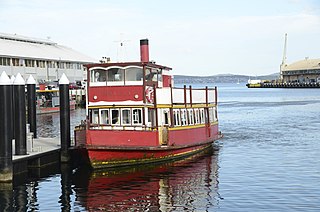
Ferries in Hobart are a form of public transport in the city of Hobart, Tasmania. Though for decades they had not provided a major alternative public transport service for commuters and tourists in Hobart across the Derwent River, a renewed ferry service began in 2021. This has resulted in a revival of ferry transport in Hobart, including long-term plans to expand the network.

Bass Strait Ferries have been the ships that have been used for regular transport across Bass Strait between Tasmania and Victoria in mainland Australia, as well as the various attempts to link Tasmania with Sydney. Historically, some regular shipping services in the twentieth century linked Sydney, Melbourne and Hobart with the Bass Strait ports: Launceston's various port locations, Devonport and Burnie. The distinction between coastal shipping and Bass Strait ferry has been blurred at times.
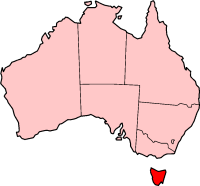
The Tasmanian Freight Equalisation Scheme is an Australian Government scheme to provide financial assistance to shippers of freight between Tasmania and mainland Australia. The scheme aims to assist in alleviating the sea freight cost disadvantage incurred by shippers of eligible non‐bulk goods moved between Tasmania and the mainland of Australia. It provides a freight subsidy to producers selling into Australian domestic markets, but not for exports outside of Australia.
The Department of State Growth is a Tasmanian Government department responsible for fostering economic growth and creating job opportunities within the state. The department plays a vital role in supporting diverse and sustainable economic development, benefiting the Tasmanian community.
Spirit of Tasmania IV is a roll-on/roll-off ferry built by Rauma Marine Constructions in Rauma, Finland. It is to be operated by Spirit of Tasmania in Australia on the Bass Strait ferry route between Geelong, Victoria and Devonport, Tasmania.
Spirit of Tasmania V is a roll-on/roll-off ferry, under construction by Rauma Marine Constructions at its shipyards in Rauma, Finland. It is to be operated by Spirit of Tasmania in Australia on the Bass Strait ferry route between Geelong, Victoria and Devonport, Tasmania.

The Sea Highway is an Australian colloquialism and figurative shipping route used to describe the sea lines of communication between the state of Victoria on the Australian mainland and island state of Tasmania across the Bass Strait.















